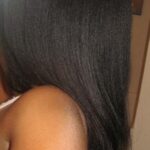Newborn babies have soft skulls which may become misshapen in a condition called “positional plagiocephaly” or commonly known as “flat head.” When your newborn spends a lot of time sleeping or leaning on one side of her head, the soft, pliable skull bones can begin to mold slightly. The result is a flat spot on your baby’s head. Prevent “flat head” in your newborn baby with these parenting tips.
Flat head not only flattens a spot on the back or side of the head. It can also affect hair growth, causing your baby to have a slight bald spot.
Cases of positional plagiocephaly are on the rise in the United States. According to Kidshealth.org the rate of flat head in American newborns increased by six times its original number between 1992 and 1994. This increase is partly due to busier lifestyles, which causes new babies to spend more time in carriers and seats with their heads resting back. It is also a side affect of the research to prevent SIDS (Sudden Infant Death Syndrome) which shows back sleeping as the healthiest position for infants to avoid SIDS.
Premature infants also run a higher risk for flat head because their skulls are less developed and softer. Additionally, preemies are more likely to spend the majority of their time lying flat as they develop and gain their strength.
If you suspect your child has flat head, or if you notice a misshaping of the head, consult your doctor to be sure. Self-diagnosing flat head could make you miss the more serious craniosynostosis, which is a condition that might result in brain damage. Craniosynostosis may need surgery to correct. Flat head is usually treated without surgery and self-corrects within the first year of a child’s life.
Although avoiding flat head with alternate sleeping positions is obviously not worth the increased risk of SIDS, there are some things you can do to safely prevent positional plagiocephaly in your newborn.
Alternate the crib positions in which your newborn sleeps. For example, if your baby usually is placed in the crib with his head on the left end, switch it up and place his head on the right end. This naturally alters the direction your baby will tilt his head and remove pressure from the exact same spot each night.
During the day, try to limit the amount of time your new baby spends in the carrier. Busy moms and dads may have to travel with baby frequently, but try to provide as many breaks as possible. If the parents are tag-teaming errands, try to carry baby outside of the carrier so their head is free if possible.
When not traveling, give your infant lots of play time on their belly. Placing your baby on her tummy on a blanket helps build strength in her neck muscles and back as well as limits the amount of time her skull is pressing against a surface. However, do not let your baby sleep on her stomach.


